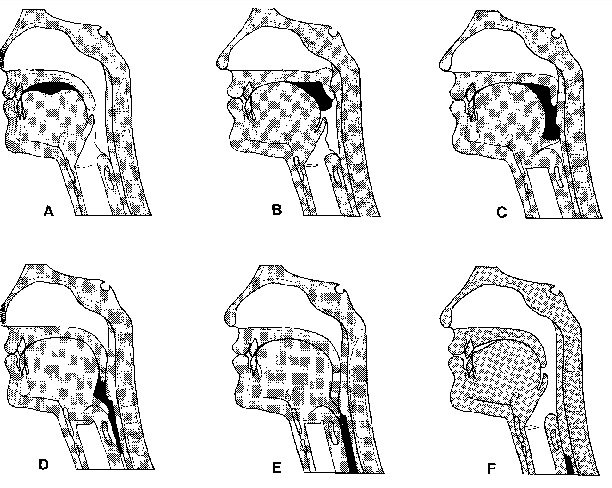The Modified Barium Swallow (cont.)

|
An Illustration of Normal swallowing (Modified
from reference #5, below) |
 |
-
Preparation for swallowing.
The bolus is confined in the oral cavity with lip closure anteriorly and
the posterior tongue and soft palate in close approximation.
-
Initiation of swallow. The bolus has passed into the oropharynx. The
soft palate has
apposed Passavant's cushion in the constrictor wall and thus closes the
palatopharyngeal isthmus, preventing nasopharyngeal regurgitation.
-
The bolus is contained in the oropharynx. The larynx has elevated and
closed, and the epiglottis is in a horizontal position.
-
The bolus is in the oropharynx and has entered the hypopharynx and
adjacent esophagus. The epiglottis is tilted downward, and the peristaltic
wave of the pharyngeal constrictor muscles is in the midpharynx.
-
The bolus has passed into the pharyngoesophageal segment (region of the
cricopharyngeus muscle) and cervical esophagus.
-
The bolus is disappearing into the upper esophagus. The laryngeal
airway has
reopened. The epiglottis has returned to the upright position. The
cricopharyngeus muscle has returned to its resting state - contracted.
|
| |


![]()

![]()
